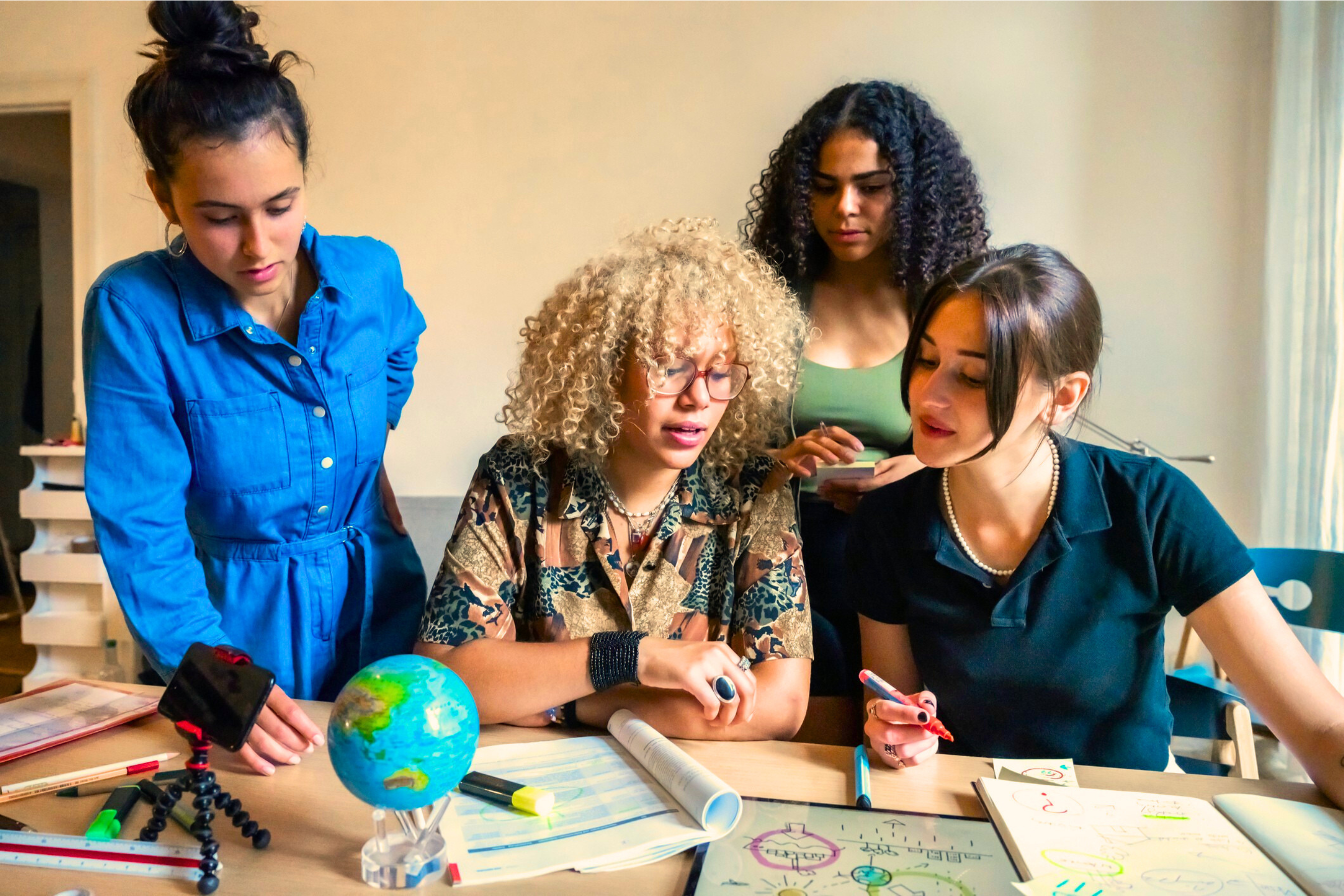



johndoe@gmail.com
Are you sure you want to reset the form?
Your mail has been sent successfully
Are you sure you want to remove the alert?
Your session is about to expire! You will be logged out in
Do you wish to stay logged in?

“Global citizenship education aims to empower learners of all ages to assume active roles, both locally and globally, in building more peaceful, tolerant, inclusive and secure societies.” — UNESCO Global Citizenship Education: Topics and Learning Objectives (2015)
The integration of global citizenship education into youth learning is critical to help prepare students for an increasingly interconnected and interdependent world. Grounded in principles of human rights, social justice, sustainability, and cultural pluralism, global citizenship pedagogy can set a foundation that enables young people to become informed, empathetic, and socially responsible adults.
Scroll down to learn how global citizenship education and enhance students’ critical consciousness, inspire active civic engagement, and cultivate local and transnational problem-solving.
Read this sample chapter in which author and ethnographer Zhang Wenchao explores the challenges faced by practitioners who endeavor to incorporate global citizenship practices in Chinese schools.
Learn more about the role of UNESCO and its educational policies with Eva Schandevyl’s overview of the organization’s historical place at the intersection of human rights and international understanding.
Discover South African education professor Yusef Waghid’s perspective on Global Citizenship Education (GCE) and its implications.
Take a theoretical perspective on global citizenship with this chapter by Monisha Bajaj and Nomsa Mabona on human rights education and its place in GCE pedagogy.
Read about the role of restorative practice in the modelling of key skills that foster global citizenship with this chapter from Rosalind Duke.

With more than 200 million people across 26 states and a federal district, Brazil faces significant challenges that affect its education system: economic inequality, social exclusion, and political influence on curriculum. Gaps in quality and access between public and private schools, as well as between urban and rural regions, can result in limited learning opportunities, underfunded schools, teacher shortages, and high drop out rates, particularly in marginalized communities. Despite these obstacles, the nation is seeing signs of meaningful change. Recent reforms emphasize stronger regulation and accountability, improved teacher training,and expanded early childhood programs. With a growing national conversation about educational equity and quality, Brazil is laying the groundwork for a more just and effective system that can better serve all of its students.
Brazil’s history of social inequality deeply affects the country’s education system, reinforcing cycles of poverty and limiting opportunities for marginalized communities. Yet although students from low-income families have often attended overcrowded and under-resourced public schools and wealthier students have typically benefitted from high-quality private institutions, the country has prioritized equal access to early education in recent years. Growing public awareness has galvanized government efforts to promote increased child-centered care starting with Early Childhood Education, and remedy Brazil’s low literacy levels among children.
Brazil’s higher education system has increasingly embraced the concept of education for all citizens, regardless of background. As a result, education experts advocate emphasis on planetary citizenship as a theme in transdisciplinary curriculum. Such a pedagogical shift allows professors in ranging disciplines to decolonize curriculum and move towards Brazilian education theorist Paolo Freire’s hope-in-action perspective. While access to higher education remains uneven, favoring students with more privileged backgrounds, this shift continues to provoke new opportunities for everyone seeking higher education, including the advancement of the Open University of Brazil.